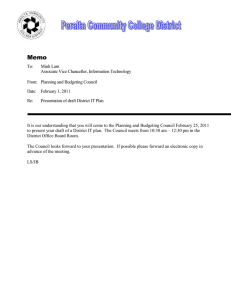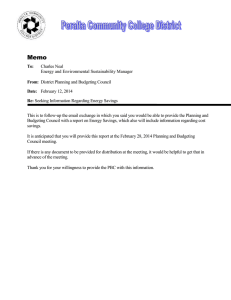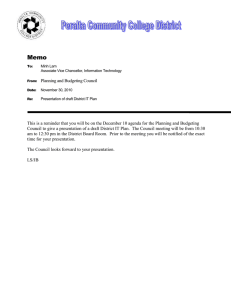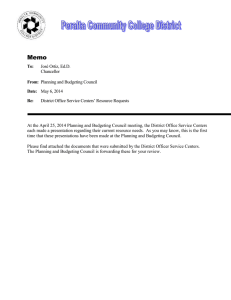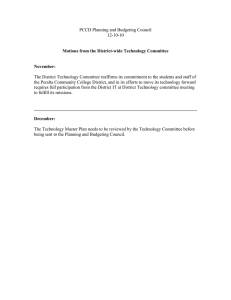Campus School Improvement Team 12-13 Meeting Documentation Template SIT Committee Decision-Making
advertisement
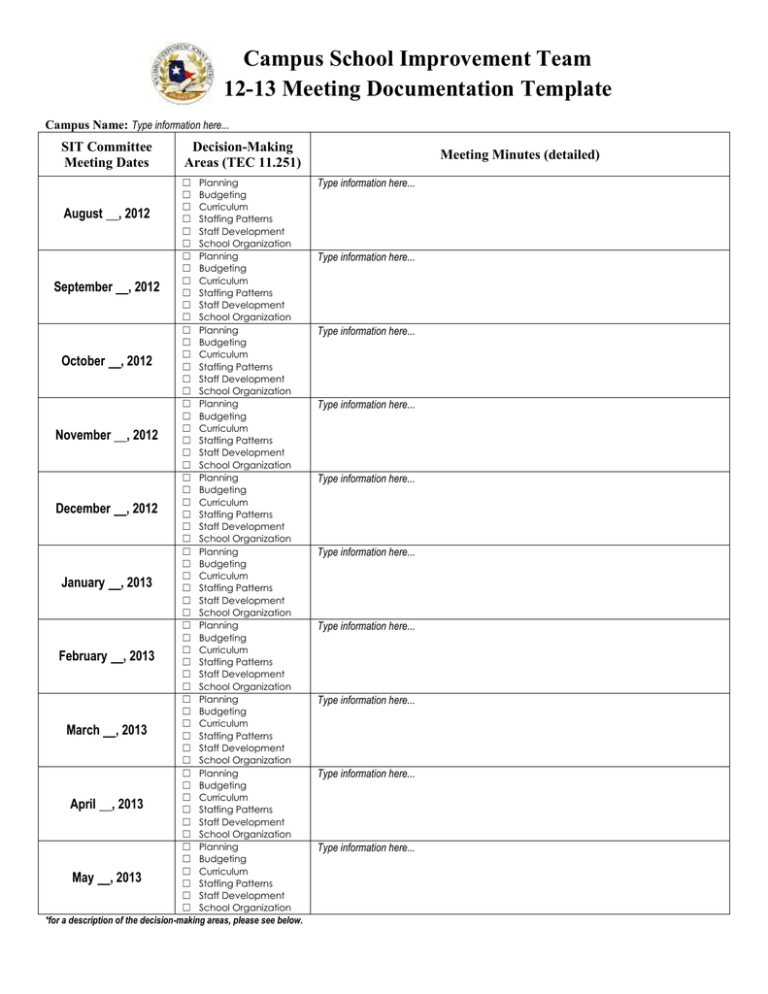
Campus School Improvement Team 12-13 Meeting Documentation Template Campus Name: Type information here... SIT Committee Meeting Dates August , 2012 September October , 2012 November December January February March April May , 2012 , 2012 , 2012 , 2013 , 2013 , 2013 , 2013 , 2013 Decision-Making Areas (TEC 11.251) ☐ ☐ ☐ ☐ ☐ ☐ ☐ ☐ ☐ ☐ ☐ ☐ ☐ ☐ ☐ ☐ ☐ ☐ ☐ ☐ ☐ ☐ ☐ ☐ ☐ ☐ ☐ ☐ ☐ ☐ ☐ ☐ ☐ ☐ ☐ ☐ ☐ ☐ ☐ ☐ ☐ ☐ ☐ ☐ ☐ ☐ ☐ ☐ ☐ ☐ ☐ ☐ ☐ ☐ ☐ ☐ ☐ ☐ ☐ ☐ Planning Budgeting Curriculum Staffing Patterns Staff Development School Organization Planning Budgeting Curriculum Staffing Patterns Staff Development School Organization Planning Budgeting Curriculum Staffing Patterns Staff Development School Organization Planning Budgeting Curriculum Staffing Patterns Staff Development School Organization Planning Budgeting Curriculum Staffing Patterns Staff Development School Organization Planning Budgeting Curriculum Staffing Patterns Staff Development School Organization Planning Budgeting Curriculum Staffing Patterns Staff Development School Organization Planning Budgeting Curriculum Staffing Patterns Staff Development School Organization Planning Budgeting Curriculum Staffing Patterns Staff Development School Organization Planning Budgeting Curriculum Staffing Patterns Staff Development School Organization *for a description of the decision-making areas, please see below. Meeting Minutes (detailed) Type information here... Type information here... Type information here... Type information here... Type information here... Type information here... Type information here... Type information here... Type information here... Type information here... S.I.T. Committee Decision-Making Areas (TEC 11.251) Planning: Under state statute the planning and decision-making process is presented as an integrated process (TEC 11.251). The planning process involves the professional staff of the district, parents and community members in conducting a comprehensive needs assessment, establishing and reviewing the district’s and campuses’ goals and performance objectives. District and campus-level plans are developed, including strategies, personnel assignments, time lines, resources/budget necessary to accomplish performance objectives and student-outcome related methods for incremental evaluation of the implementation of the plans. The plans are developed, reviewed, and revised annually for the purpose of improving the performance of all students. Budgeting: To effectively address budgeting, committee members should be given an annual orientation in budget-building and use of funds. Sample of the types of issues committee members may be interested in addressing with respect to budgeting: What conditions, if any, are associated with the use of different funding sources? How can budgetary allocations be shifted to be used for different purposes (e.g., using funds allocated for personnel salaries to buy materials or equipment? Are state compensatory education funds budgeted to supplement the regular education program? Curriculum: A key area that impacts student outcomes is that of curriculum. This area may include issues related to instructional methods, as well as the selection of subject areas and the organization of essential knowledge and skills within subject areas. At the high school level, campus committees may consider whether to offer magnet programs; at the elementary level, determine how to integrate the critical elements of art and music into the elementary curriculum; and at the middle school level, address how to incorporate violence prevention strategies into the curriculum. Staffing Patterns: This area may address a wide variety of topics. It may refer to the team composition of instructional units (e.g., for block scheduling teams, instructional departments, or interdisciplinary teams). It may address the chain of command and duties for teacher aides and campus volunteers. Staffing patterns may refer to the scheduling of staff within the instructional day and the structure provided for teams to schedule planning periods in a coordinated time frame. School Organization: This area may address the physical organization of the building, the allocation of equipment and materials, and the use of space for regular and special functions and services. Sample questions that may be addressed pertaining to school organization are: Is the organization designed to enhance the success of all children with regard to promotion/retention procedures, scheduling of classes, etc.? Does this organization link effectively with available external sources of support (e.g., human services agencies)? Do students understand the campus structure and how to get appropriate assistance within the organization? Is the organizational structure designed to react quickly and efficiently in a crisis situation? Staff Development: Staff development must be predominantly campus-based, related to achieving campus performance objectives established by the principal with the assistance of the campus-level planning and decision-making committee, and developed and approved by the campus-level committee (TEC ξ21.451). Questions that may be useful to consider with respect to this process follow: Does the staff development involve reflecting on curricular and instructional issues, analyzing student achievement results, and reflecting on means of increasing student achievement? What areas of the campus needs assessment indicate a need for improved instructional skills and methods? Which student groups are in greatest need of improvement? Is there an indication that staff members may need development with respect to effective interventions with specific groups?
